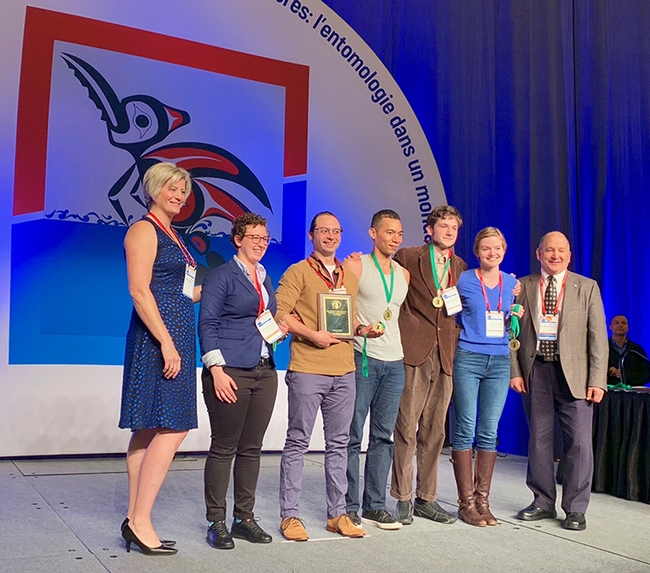- Author: Kathy Keatley Garvey
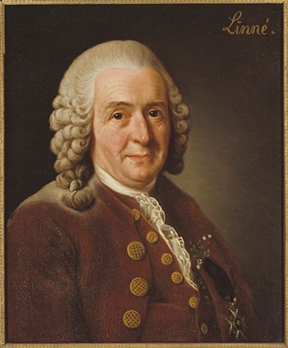
And rightfully so. It's a stand against racism and a step toward a more diverse and inclusive organization.
And frankly, it's a more appropriate name.
ESA, founded in 1889, launched the games in 1982, naming them for Swedish scientist-physician Carl Linnaeus (1707-1778), the father of taxonomy. He was a botanist and zoologist as well as a physician.
ESA describes The Games as a "fast-paced, college-bowl style contest in which students from various colleges and universities test their knowledge by answering questions on insect science. Students compete first at the regional branch level, and then the winning teams compete each year at the national level at ESA's Annual Meeting."
A petition on Research Gate drew some 1500 approvals for the name change. However, many members began seeking a name change several years ago.
Here's why: Linnaeus' classifications of the human race.
Linnaeus made "offensive, race-based classifications of humans that helped form a basis for racism in science," according to a Request for Change on Research Gate. "The recent police murders of George Floyd, Breonna Taylor, Ahmaud Arbery, Tony McDade, and too many other Black Americans have put a national spotlight on racial injustice in our country. White supremacy and racism have existed in academic and scientific institutions since their advent, but these events have catalyzed heightened reflection and action around justice within academia."
Other points involving the name switch from Linnaean Games to Entomology Games:
- Linnaeus was not an entomologist
- The trivia questions deal mostly with insect science and entomologists, not taxonomy.
- Most people outside the world of entomology probably cannot relate to the meaning of the Linnaean Games, but they can to "Entomology Games"
As ESA president Alvin Simmons, a research entomologist at USDA-ARS, U.S. Vegetable Laboratory, Charleston, S.C., said in the ESA news release: “National events this year have brought issues of diversity and inclusion within our discipline and our Society to the forefront. Ultimately, the board believed that the loss of any student competitors who felt unwelcome because of the name of the Games went against ESA's commitment to diversity, inclusion, and students as the future of entomology. A name can be replaced, but each entomologist brings a unique and valuable contribution to our Society that is irreplaceable. The Entomology Games will continue ESA's traditions of fun, competition, and school pride.”
ESA published a statement on Why Black Lives Matter to Entomology on June 1, which said in part: "Historically, people of color have been less likely to choose careers in the life sciences, and even today black entomologists make up 2.7 percent of the ESA membership, up from 2 percent in 2012. Every time a person is kept from contributing to our understanding of entomology due to systemic inequities, our entire discipline is impoverished."
Meanwhile, due to the coronavirus pandemic, ESA will conduct its 2020 ESA meeting in a virtual format. From its website: "We are excited to embrace the virtual format and build an exceptional meeting that will truly embody the spirit of Entomology for All—a meeting where all insect scientists can participate and share their work, regardless of location, specialty area, or ability to travel. Entomology 2020 will feature multiple live-streams running simultaneously November 16-19. On-demand content will be available from November 11-25."
University of California teams have done well in the The Games. A UC Davis team won the national championship in 2015, and a UC Berkeley-UC Davis team won two national championships, one in 2016 and one in 2018. The 2016 Games were deemed international as it occurred during a joint meeting of ESA and the International Congress of Entomology (ICE) in Orlando, Fla. (Walter Leal, UC Davis distinguished professor and USDA-ARS research entomologist Alvin Simmons co-chaired the ICE meeting.)
The 2019 UC team made it to the finals but didn't place. It was captained by Ralph Washington Jr., a UC Berkeley public policy graduate student who received his bachelor's degree in entomology at UC Davis. He was joined by three UC Davis Department of Entomology and Nematology doctoral students: Brendon Boudinot, Zachary Griebenow and Jill Oberski, all of the Phil Ward lab, and alternates Miles Dakin of the Christian Nansen lab and Hanna Kahl of the Jay Rosenheim lab.
Washington captained all four recent teams, and Boudinot helped anchor all of them.
Statistics include:
- 2018: UC won the national championship (this links to a UC Davis news story) in Vancouver, B.C., defeating Texas A&M Graduates, with Washington captaining the team and joined by UC Davis graduate students Boudinot, Oberski and Griebenow of the Phil Ward lab, and Emily Bick of the Christian Nansen lab. (No video of the championship round)
- 2017: The UC team did not compete. (Texas A&M won the national championship; see championship round on YouTube)
- 2016: UC won the national and international championships at the joint meeting of ESA and ICE in Orlanda, Fla., defeating the University of Georgia. (See championship round on YouTube)
- 2015: UC won the national championship at the games held in Minneapolis, Minn., defeating the University of Florida. (See championship round on YouTube)
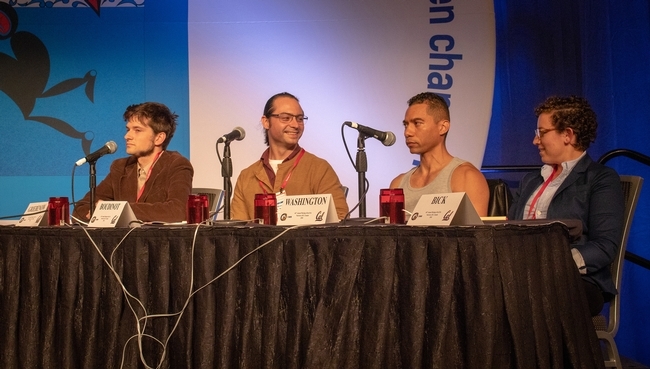
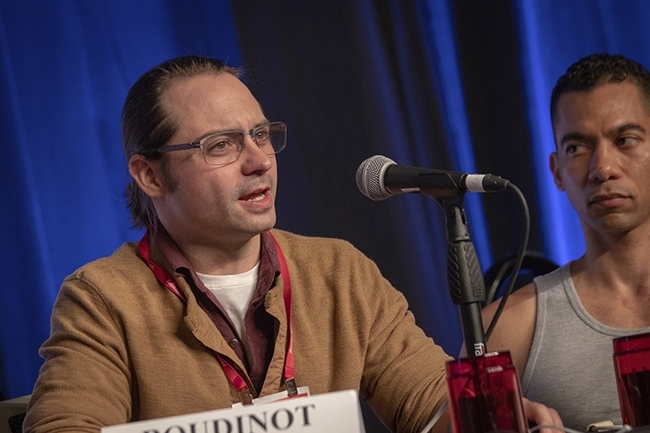
- Author: Kathy Keatley Garvey
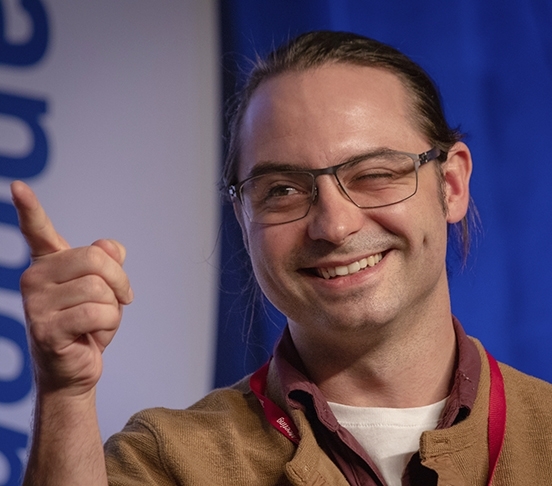
Ask them a question about insects and entomologists, and odds are, they'll come up with the correct answer.
And quickly.
They've already won three national championships and are gearing up for a fourth.
"They" are members of the UC Linnaean Games Team (UC Berkeley and UC Davis graduate students) and they're looking forward to competing in the annual Linnaean Games at the Entomological Society of America (ESA) meeting, set Nov. 17-20 in St. Louis.
The Linnaean Games, launched in 1983, are lively question-and-answer, college bowl-style competitions on entomological facts and played by winners of the ESA branch competitions. The teams score points by correctly answering random questions.
This year's UC team, captained by Ralph Washington Jr., a UC Berkeley public policy graduate student who received his bachelor's degree in entomology at UC Davis, includes five UC Davis doctoral students in entomology: Brendon Boudinot, Zachary Griebenow and Jill Oberski, all of the Phil Ward lab, UC Davis Department of Entomology and Nematology; and alternates Miles Dakin of the Christian Nansen lab and Hanna Kahl of the Jay Rosenheim lab.
Washington has captained all three winning teams, and Boudinot has helped anchor all of them.
The record:
- 2018: UC won the national championship (link to news story) in Vancouver, B.C., defeating Texas A&M Graduates, with Washington captaining the team and joined by Boudinot, Oberski and Griebenow, and Emily Bick (who received her doctorate this year) of the Christian Nansen lab. (No video of the championship round)
- 2017: The UC team did not compete. (Texas A&M won the national championship; see championship round on YouTube)
- 2016: UC won the national and international championships at the University of Florida, at the joint and international meeting of ESA and the International Congress of Entomology (ICE), defeating the University of Georgia. (See championship round on YouTube)
- 2015: UC won the national championship at the games held in Minneapolis, Minn., defeating the University of Florida. (See championship round on YouTube)
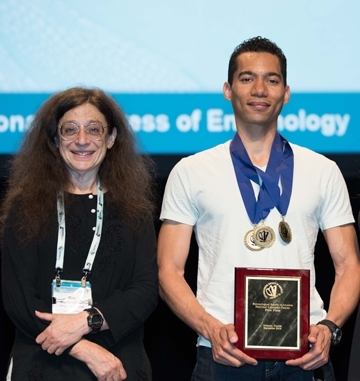
All branches of ESA conduct a Linnaean Games competition, with each branch sending the winner and the second-place winner to the nationals. The UC team has won the Pacific Branch (PBESA) competition multiple times. PBESA encompasses 11 Western U.S. states, plus several U.S. territories and parts of Canada and Mexico.
Some of the previous questions asked of the UC team during the championship rounds:
Toss-Up Question: What is the smallest insect that is not a parasite or parasitoid?
Answer: Beetles in the family Ptiliidae.
Bonus Question:Some species of mosquitoes lay eggs that can undergo diapause or aestivation. Give at least three cues that trigger the aquatic eggs to hatch.
Answer: Temperature, immersion in water, concentration of ions or dissolved solutes.
Toss-Up Question: Chikungunya is an emerging vector-borne disease in the Americas. Chikungunya is derived from the African Language Makonde. What means Chikungunya in Makonde?
Answer: Bending up.
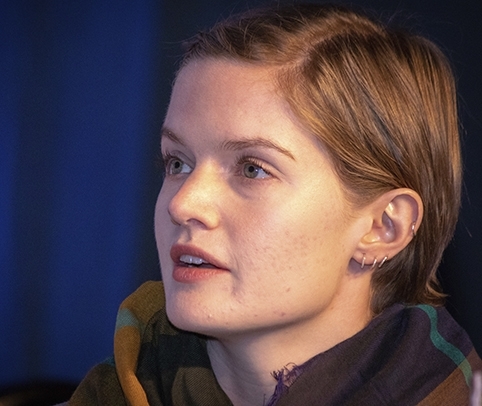
Answer: Trichoptera
Toss-Up Question: Certain Chrysomelid larvae carry their feces as a defensive shield. To what subfamily do these beetles belong?
Answer: Cassidinae.
Bonus Question: The first lepidopteran sex pheromone identified was bombykol. What was the first dipteran sex pheromone identified? Give the trade or chemical name.
Answer: Muscalure, Z-9-Tricosene. It is also one of the chemicals released by bees during the waggle dance.
Toss-Up Question: What famous recessive gene was the first sex-linked mutation demonstrated in Drosophila by T.H. Morgan?
Answer: White
Bonus Question: Cecidomyiidae are known as the gall flies. What is unique about the species Mayetiola destructor, and what is its common name?
Answer: Mayetiola destructor is the Hessian Fly, a tremendous pest of wheat. It does not form galls.
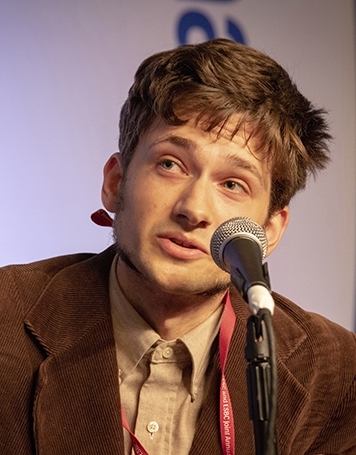
Answer: The Endangered Species Act
Toss-Up Question: In what insect order would you find hemelytra?
Answer: The order Hemiptera.
Toss-Up Question: The subimago stage is characteristic of what insect order?
Answer: The order Ephemeroptera
Bonus Question: A 2006 Science article by Glenner et al. on the origin of insects summarized evidence that Hexapods are nothing more than land-dwelling crustaceans, which is to say that the former group Crustacea is paraphyletic with respect to the Hexapoda. What hierarchical name has been used to refer to this clade?
Answer: Pancrustacea
Toss-Up Question: What are the three primary conditions that define eusociality?
Answer: Cooperative brood care, overlapping generations, and reproductive division of labor
In addition to serving on the Linnaean Games Team, Boudinot will be honored as the PBESA recipient of the John Henry Comstock Award, the top graduate student award. PBESA is one of six branches of ESA.
Founded in 1889, ESA is the world's largest organization serving the professional and scientific needs of entomologists and individuals in related disciplines. It is comprised of more than 7000 members, who are affiliated with educational institutions, health agencies, private industry, and government. Members are researchers, teachers, extension service personnel, administrators, marketing representatives, research technicians, consultants, students, pest management professionals, and hobbyists.
Resources:
Origin of Linnaean Games (Richard Levine in American Entomologist)
Previous Winners (Entomological Society of America)
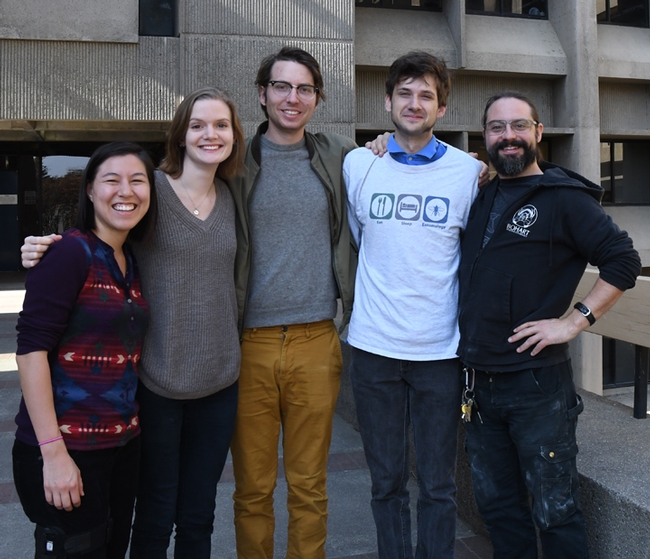
- Author: Kathy Keatley Garvey
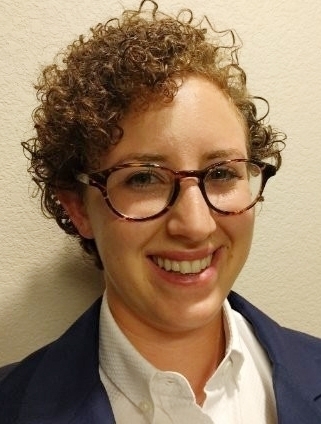
How fast time passes.
Bick will present her exit seminar at 3 p.m., Monday, Aug. 5 in Room 158 of Briggs Hall. Her topic: "Evaluating the Relative Importance of Mechanisms for Diverse Plant Use in Agroecosystem Herbivore Mitigation: an Example in California Strawberries."
"As pest management strategies shift away from agrochemical use, practitioners aim to implement more ecologically friendly practices," Bick writes in her abstract. "One such practice uses diverse crops placed in an agroecosystem to mitigate pest damage. There are many possible mechanisms which facilitate this phenomenon. Knowing a diverse plant's mechanism(s) allows for more efficient field implementation."
"This presentation will evaluate the mechanism of the economic benefit of planting alfalfa in a California strawberry monoculture. Using a novel CO2 based sampling method, spatially explicit samples were taken at three sites over two years. We found that alfalfa did not act, as previously identified, a trap crop, but rather its presence actually increased natural enemies. This work serves as a framework for evaluation of the mechanism for use of diverse plants in agricultural landscapes."
Bick, who has accepted a postdoctoral position at the University of Copenhagen, specializes in integrated pest management (IPM). She received her bachelor's degree in entomology in 2013 from Cornell University, and her master's degree in entomology in 2017 from UC Davis. She joined the doctoral program in September 2015.
Bick served as an emergency medical technician from 2008 to 2017 and gained her pesticide applicator's license in 2013. She was singled out to receive the Student Certification Award at the Entomological Society of America (ESA) meeting in 2018. In 2014, she was named a Board-Certified Entomologist, a honor bestowed on her at the ESA meeting.
Bick helped anchor the UC Davis Linnaean Games Team that won the national championship at the ESA meeting in 2016, and the University of California (UC Davis and UC Berkeley) Linnaean Games Team that won the national championship again in 2018. (See Bug Squad blog.) The Linnaean Games, launched in 1983, are lively question-and-answer, college bowl-style competitions on entomological facts and played by winners of the ESA branch competitions. The teams score points by correctly answering random questions. (Watch the 2016 championship round on YouTube).
Bick was also active in the UC Davis Entomology Graduate Student Association (EGSA), serving as vice president.
A person of many talents, she wrote a highly praised review of the San Francisco-staged play, An Entomologist's Love Story, published in May of 2018 in Entomology Today. Tweeted the San Francisco Playhouse: “Quite possibly the coolest review we've ever received.”
In her review, Bick wrote that the play “shows that life imitates art and art imitates life, with insect mating rituals serving as a proxy for human dating behavior.”
“The well-known antagonistic insect mating behavior of bed bugs' traumatic insemination, praying mantids' sexual cannibalism, and honey bees' mating plugs are all accurately described and then used to represent adversarial (human) dating behavior. Fireflies' bioluminescence, meanwhile, is cast in a romantic light.”
“The play brims with entomological humor, from anthropomorphizing bed bugs to a running joke that sometimes volunteers actually make life harder for researchers,” Bick noted. “While the public will be entertained by the gross descriptions of entomological behavior (pun intended), only we insect scientists will know that the 'Lou' the protagonists keep referring to is actually Dr. Louis Sorkin of the American Museum of Natural History in New York City (and that, yes, he does keep a bed bug colony there). Or, for those of us who have been lucky enough to take a tour, you know the Museum's offices really are that difficult to get to.”
Now it's off to the historic University of Copenhagen for the next chapter of her entomological life. "I am moving to Copenhagen on Aug. 31 but moving out of Davis the week before," she says.
That would be as Dr. Emily Bick...entomologist extraordinaire.
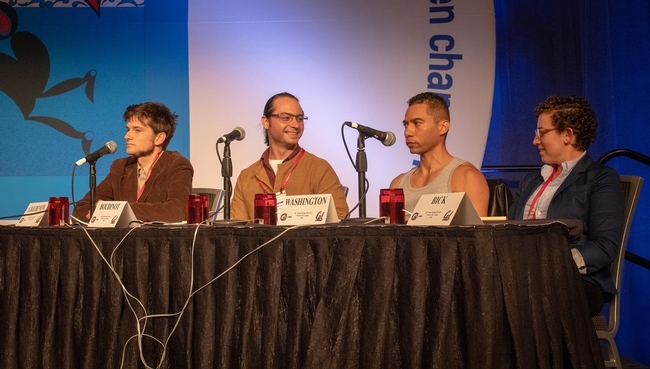
- Author: Kathy Keatley Garvey
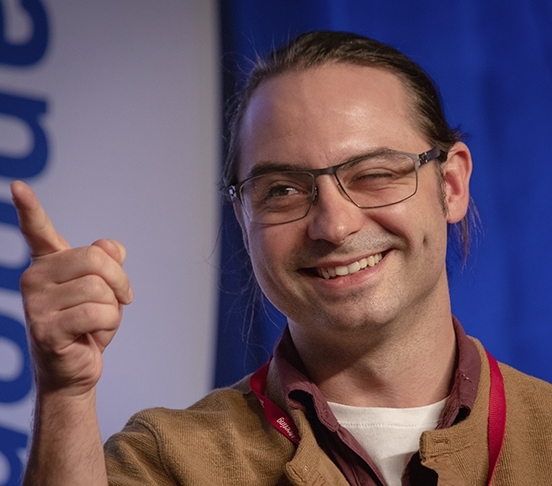
The UC team, which swept the national championship last year, just won the regional competition Monday night at the Pacific Branch, Entomological Society of America (PBESA) meeting in San Diego. The Linnaean Games, launched in 1983, are lively, college-bowl style competitions on entomological facts, including questions on insects and entomologists.
The UC team is comprised of UC Davis and UC Berkeley graduate students: captain Ralph Washington Jr., who received his bachelor of science degree at UC Davis and is now a graduate student at UC Berkeley; doctoral candidate Brendon Boudinot of the Phil Ward lab, UC Davis; and graduate student Zach Griebenow of the Phil Ward lab.
At the PBESA meeting, UC Riverside took second, and Washington State University, third.
The UC Team will now defend its championship at the ESA meeting , set Nov. 17-20 in St. Louis, Mo. Both the first and second-place teams from each of the ESA's six branches are eligible to compete.
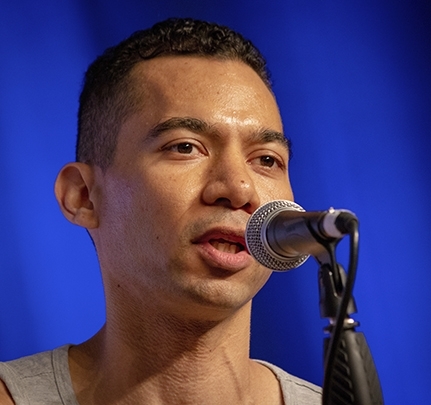
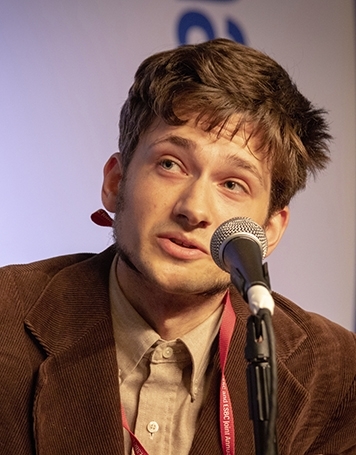
Answer: Arctic tundra
Question: The Passandridae are a family of beetles. What is unusual about their larvae?
Answer: The larvae are ectoparasitoids of wood-boring insects
Both Boudinot and Washington have received major accolades at the ESA and PBESA meetings. Boudinot, who researches ants, won the 2019 John Henry Comstock Award, the highest graduate student award presented by PBESA. He delivered a presentation on his research at the San Diego meeting. He next will be honored as one of the six Comstock award winners (one from each ESA branch) at the national meeting.
Washington, who at UC Davis studied with major professors Steve Nadler, professor and chair of the UC Davis Department of Entomology and Nematology, and assistant professor Brian Johnson, won PBESA's 2017 Student Leadership Award.
PBESA encompasses 11 Western states, plus U.S. territories and parts of Canada and Mexico. ESA, the world's largest entomological society, is comprised of 7000 members.
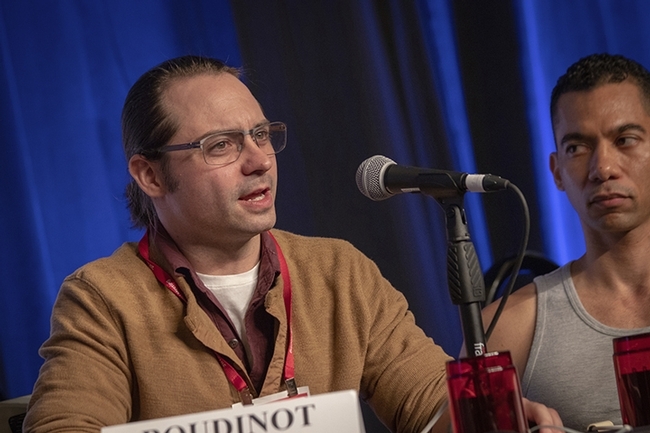
- Author: Kathy Keatley Garvey
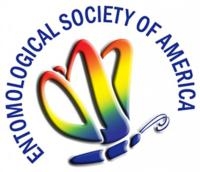
The incredible University of California Linnaean Games Team, comprised of graduate students from UC Davis and UC Berkeley, won the national championship at the popular and highly competitive Linnaean Games hosted this week at the Entomological Society of America's meeting in Vancouver, B.C.
This makes the third year that a UC Davis-based team has won the national championship.
"In the final, UC defeated Texas A&M (graduate students), 140-20," said Joe Rominiecki, manager of communications for the Entomological Society of America (ESA). "UC defeated the University of Florida 110-100 in the semifinal round. In the preliminary round, UC defeated the Texas A&M undergrad team."
The Linnaean Games, launched in 1983, are lively question-and-answer, college bowl-style competitions on entomological facts and played by winners of the ESA branch competitions. The teams score points by correctly answering random questions.
The UC team is comprised of captain Ralph Washington Jr., a UC Davis entomology graduate who is studying public policy at UC Berkeley; UC Davis doctoral students Brendon Boudinot, Jill Oberski and Zachary Griebenow, all of Phil Ward lab, specializing in ants; and UC Davis doctoral student Emily Bick of the Christian Nansen lab, a lab that specializes in insect ecology, integrated pest management and remote sensing.
In the first round, the UC team defeated the Texas A&M undergrads, the defending champions, by 120 to 0. "In the second round, we played Florida (including doctoral candidate David Plotkin, who specializes in the systematics and morphology of emerald moths), and won it in a nail-biting competition down to the last question!" said Boudinot. "Our final round was against the Texas A&M grads."
"Before us, there was a sudden death double overtime game (Texas A&M grads vs University of Delaware) which was really exciting," Boudinot said.
Griebenow recalled that among the questions the UC team correctly answered in the championship round:
Question: The longest-lived lepidopteran is a wooly-bear moth in the Arctiidae. In what habitat would you find these?
Answer: Arctic tundra
Question: The Passandridae are a family of beetles. What is unusual about their larvae?
Answer: The larvae are e ectoparasitoids of wood-boring insects.
The UC Davis Linnaean Games Team, captained by Washington, won the national championship twice, defeating the University of Georgia in 2016 and the University of Florida in 2015. Boudinot served on both championship teams, and Bick, the 2016 team. Last year UC Davis did not compete. Texas A&M won the national championship, with Ohio State University finishing second.
Each ESA branch hosts a Linnaean game competition at its annual meeting. The winning team and the runner-up both advance to the national competition. The national preliminaries took place Sunday, Nov. 11 while the finals got underway at 5 p.m. on Tuesday, Nov. 13.
Members of the winning team will each receive a gold medal and and a plaque for the team's department.
To get to the national finals, the UC team won the regional championship hosted by the Pacific Branch of ESA at its meeting June 10-13 in Reno. They defeated Washington State University in a sudden death overtime to win the title.
Congrats, UC Linnaean Team!
(Editor's Note: More information and photos are pending.)
